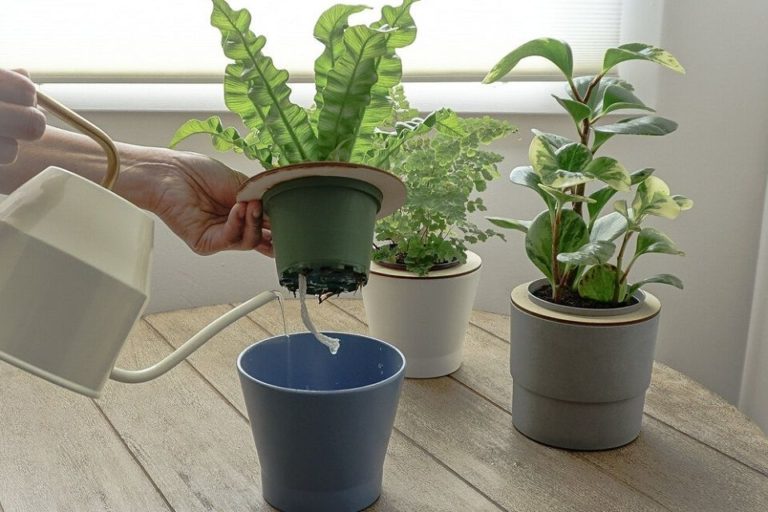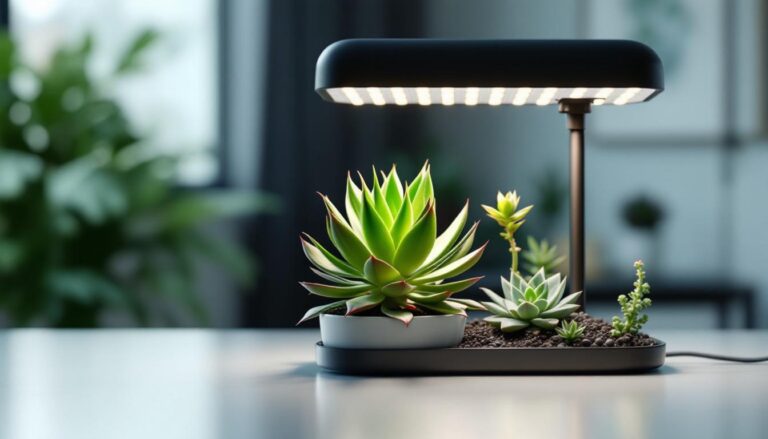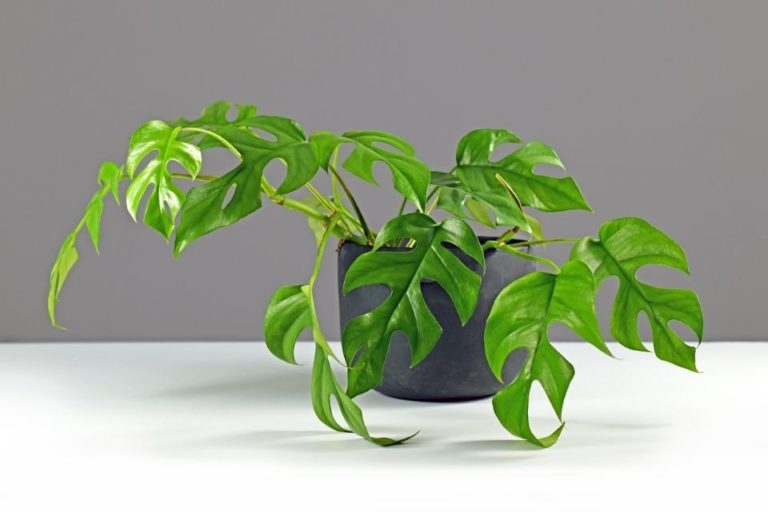Baby Tears Plant Care: How to Grow “Soleirolia Soleirolii”
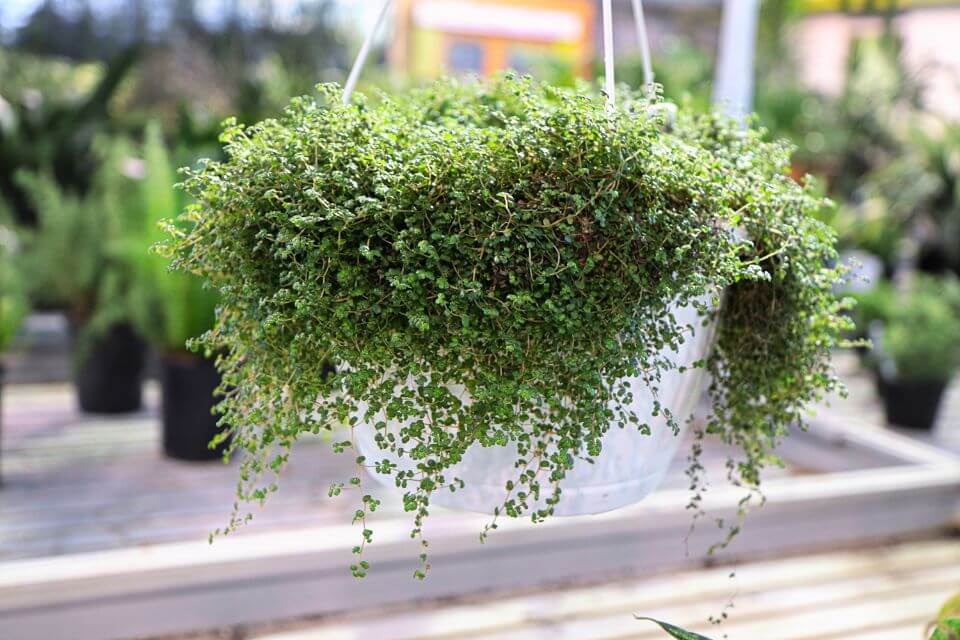
Looking for an easy-to-care-for houseplant? Baby Tears Plant (Soleirolia soleirolii) is a great option. This indoor plant is known for its low maintenance requirements and ability to thrive in a variety of conditions.
In this blog post, we’ll discuss everything you need to know about growing baby tears plants. We’ll cover everything from potting and watering tips to common problems and solutions.
So, whether you’re a beginner or an experienced gardener, read on for all the details!
TABLE OF CONTENTS
Baby Tears Plant Overview
The Baby Tears plant is a charming addition to any indoor space. Also known as Soleirolia soleirolii, this little plant is native to the Mediterranean region and has distinctively small, round leaves.
The Baby Tears plant is a perennial, meaning it will bloom year after year with proper care. Baby Tears plants are typically grown in pots or hanging baskets, as they do not need a lot of root space.
These plants prefer bright, indirect sunlight and evenly moist soil – allowing the soil to dry out completely between waterings can cause the leaves to turn brown and drop off.
With the right conditions, the Baby Tears plant will thrive and provide your home with a touch of greenery.
The Benefits Of Having Baby Tears Plant
The Baby Tears Plant is a popular choice for indoor gardens because of its small size and trailing shape. But this plant is more than just a pretty face – it also offers a range of benefits for your home.
For example, the Baby Tears Plant can help to filter out harmful toxins from the air, making it a natural way to improve indoor air quality.
Additionally, this plant is known for its ability to boost humidity levels, which can be beneficial if you live in a dry climate or suffer from conditions like sinusitis or asthma.
And if you’re looking for a plant that’s easy to care for, the Baby Tears Plant is a good option, as it doesn’t require much light or water to thrive.
So whether you’re looking to improve your indoor air quality or simply want a low-maintenance plant for your home, the Baby Tears Plant is worth considering.
Size & Appearance
The Baby Tears plant is a delicate-looking plant that is perfect for adding a touch of greenery to any space, indoors or out.
Despite its dainty appearance, the Baby Tears plant is surprisingly hardy and can grow to be up to 24 inches tall when it is planted in a hanging basket. When it grows on the ground it will get about 4 inches tall and 2 to 3 feet spread.
The plant’s small leaves are oval-shaped and radiate out from the stem in a cascading fashion, giving the plant an attractive waterfall-like appearance.
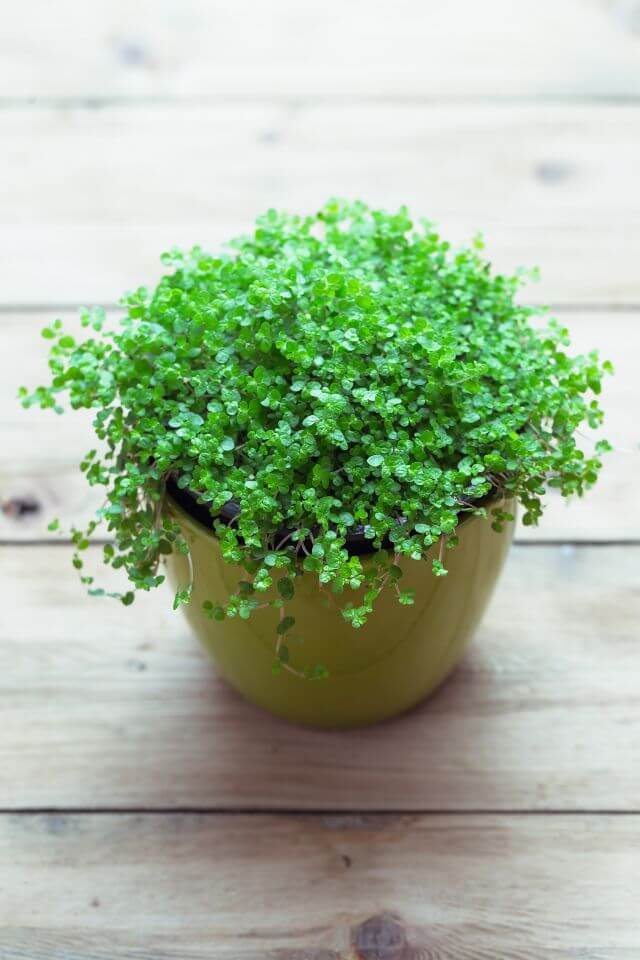
Decoration Ideas To Enhance Your Space With Baby Tears Plant
The Baby Tears plant is a versatile little plant that can be used to enhance any space. It’s perfect for adding a touch of greenery to windowsills, shelves, or even as a groundcover in garden beds.
But the Baby Tears plant can also be used as a decoration in its own right. Here are some ideas to get you started:
- Hang small pots of Baby Tears plants from the ceiling or wall to create a living piece of art.
- Place Baby Tears plants in clear jars or vases to create unique centerpieces for your dining table or coffee table.
- Fill a large pot with a mass ofBaby Tears plants and use it as an attractive room divider.
- Use Baby Tears plants to brighten up a dull corner or make a bare wall more interesting. However you choose to use them, Baby Tears plants are sure to add a touch of beauty and charm to your space.
Baby Tears Plant Care & Maintenance
The key to keeping your Baby Tears plant healthy is to provide it with the right conditions. Here are some tips to help you get started:
Choosing A Pot, Pot Size, And The Soil Requirement
These plants are popular choices for terrariums and dish gardens because they don’t need a lot of soil to thrive. In fact, baby tears plants will do best in a potting mix that is only one to two inches deep.
They also prefer a potting mix that is light and airy, such as sphagnum peat moss or perlite. When choosing a pot size for your baby tears plant, it’s important to consider both the current size of the plant and its future growth.
A pot that is too small will restrict the plant’s roots and prevent it from growing to its full potential. On the other hand, a pot that is too large will make it difficult to keep the soil moist and could lead to problems with drainage.
As a general rule of thumb, choose a pot that is about 2 to 3 inches wider than the current size of the plant.
This will give the roots plenty of room to grow without becoming cramped and will help to ensure that your plant remains healthy and vibrant for years to come.
Baby Tears Plant Watering
As any gardener knows, watering plants is essential to their health. However, it can be tricky to know how often to water, and how much water to give. Overwatering can lead to root rot, while underwatering can cause the plant to wilt and die.
The key is to find a happy medium that will keep your plants healthy and hydrated. One way to do this is to check the soil regularly. If the top layer of soil is dry, it’s time to water.
Be sure to give the plant enough water so that the soil is moist but not soaked. Another key factor is temperature. Plants will need more water in hot weather, and less in cooler weather.
By paying attention to these factors, you can ensure that your plants get the moisture they need without drowning them.
Baby Tears Plant Light Requirements And Exposure
In its natural habitat, this plant is often found growing on the banks of streams and rivers. Baby Tears plants prefer filtered sunlight or partial shade, and they need to be kept out of direct sunlight.
When grown indoors, they will do best in an east-facing window.
Temperature Requirement
The Baby Tears plant is a beautiful, delicate addition to any home. Though it is often grown as a houseplant, it is actually native to tropical regions and must be kept warm to thrive.
If the temperature drops too low, the leaves will begin to turn brown and drop off. Ideally, the plant should be kept in a spot that receives indirect sunlight and has a consistent temperature between 65 and 80 degrees Fahrenheit.
During the winter months, it is important to provide extra warmth, either by moving the plant closer to a heat source or using a grow light. With a little care, the Baby Tears plant will continue to bring beauty and life into any home.
Humidity Requirements
Baby Tears plants are native to tropical regions and prefer high humidity. If the air in your home is too dry, the leaves will begin to turn brown and drop off. It would be best if you could maintain humidity levels of 75% around the plant.
To increase the humidity around your plant, you can use a humidifier or place the pot on a tray of pebbles and water. Be sure to mist the leaves regularly, and provide extra humidity during the winter months.
With a little care, you can keep your Baby Tears plant healthy and happy for years to come.
Fertilizing Baby Tears Plant
Fertilizing is an important part of plant care, and it is important to use the right fertilizer for your plants. Baby Tears plants are light feeders and do not need a lot of fertilizer.
A general-purpose fertilizer will work well for these plants. Be sure to follow the directions on the package, as too much fertilizer can burn the roots.
Apply the fertilizer every two to four weeks during the growing season, and reduce the frequency during the winter months. With a little care, your Baby Tears plant will continue to thrive and bring beauty to your home.
Cutting And Pruning Baby Tears Plant
Baby Tears plants can be pruned to keep them looking their best. Trim off any dead or dying leaves, and cut back any leggy stems.
This will help to encourage new growth and keep the plant looking full and healthy. Be sure to use sharp, clean shears when cutting, as this will help to prevent disease.
Potting And Repotting Baby Tears Plant (step by step)
One of the best things about baby tears plants is that they’re incredibly easy to propagate. Whether you’re potting up a new plant or repotting an existing one, the process is relatively straightforward.
Here’s a step-by-step guide to potting and repotting baby tears plants:
1. Choose a pot that’s large enough to accommodate the roots of your plant. If you’re repotting, make sure the new pot is only slightly larger than the old one.
2. Add some moistened potting mix to the bottom of the pot.
3. Gently remove your plant from its current pot and loosen any compacted roots.
4. Place the plant in the new pot and fill in around it with more potting mix.
5. Water thoroughly and allow the excess water to drain away.
6. Place the potted plant in a bright, indirect light location and keep an eye on it over the next few days. If you see any leaves wilting, adjust your watering schedule accordingly.
Baby tears are notoriously finicky about getting too much or too little water, so it’s important to stay on top of things during this transition period.
Baby Tears Plant Propagation
If you want to add more Baby Tears Plant to your collection, there are two ways that you can propagate;
Propagate by Division
One of the easiest and most common ways to propagate plants is by division. This is a great method for many reasons: it’s fast, doesn’t require any special equipment, and can be done at almost any time of year.
Plus, it’s a great way to get more plants for free! When propagating by division, you simply need to divide the root ball of the plant into two or more sections, making sure that each section has a good amount of roots.
Once you’ve divided the root ball, you can replant each section in its own pot or area of the garden. Baby tears plants are easily propagated by division, and this method can be used to create a dense, low-maintenance ground cover.
If you’re looking for a fast and easy way to increase your collection of baby tears plants, the division is the way to go!
Propagate by Stem Cuttings
Propagating new plants from stem cuttings is a great option. Baby tears are typically propagated in water, but they can also be rooted in moist potting mix.
To propagate in water, fill a jar or glass with room-temperature water and remove any lower leaves from the cutting. Place the cutting in the water and allow it to root for several weeks before transplanting into the soil.
For best results, keep the water level high enough to cover at least half of the stem. To propagate in potting mix, simply insert the cutting into moistened sand, peat moss, or vermiculite.
Keep the planting media moist but not soggy, and provide bright indirect light. Roots should develop within several weeks. Once roots have formed, transplant the cutting into a small pot filled with a well-draining potting mix.
Water regularly and fertilize monthly to promote growth. With a little patience and care, you can easily propagate baby tears from stem cuttings.
Common Diseases, And Problems
Baby tears plants are one of the most popular houseplants around, and it’s easy to see why. These low-maintenance plants are perfect for beginners and add a touch of greenery to any space.
However, even baby tears can experience some problems from time to time. One of the most common problems is root rot, which can be caused by overwatering.
If you notice that your plant’s leaves are starting to yellow or fall off, check the roots for signs of rot. If they are brown and mushy, you will need to repot the plant in fresh soil.
Another issue that can affect baby tears plants is powdery mildew, which appears as white or gray powder on the leaves. This fungus is often caused by too much humidity, so be sure to provide good airflow around your plant.
With a little care, you can keep your baby tears plant healthy and looking its best.
Frequently Asked Questions
Is Baby Tears Plant Toxic To Cats And Dogs?
The answer is no, Baby Tears Plants are not toxic to cats or dogs. In fact, they are often used as ground cover in pet-friendly gardens or in hanging baskets.
Do Baby Tears Plant Flower?
As Baby Tears Plants are grown for their foliage, they rarely flower. However, if you do see flowers, they will be small and white and ivory mix colors.
Is Baby Tears Plant A Succulent?
No, Baby Tears Plants are not succulents. They are actually members of the Urticaceae family. This plant is a Herbaceous perennial.
Do Baby Tears Need Sun?
Baby Tears Plants can tolerate both low light and bright light conditions. However, they will grow best in bright, indirect sunlight.
How Fast Do Baby Tears Grow?
Baby Tears Plants are fast growers and can grow up to 6 inches per year under optimal conditions.
Can I Grow Baby Tears Plant Under Grow Lights?
Yes, Baby Tears Plants can be grown under grow lights. For best results, use a full spectrum LED grow light.
Is Baby Tears An Indoor Plant?
Yes, Baby Tears Plants are often grown as houseplants but in natural habitats, they grow outdoor. This plant is perfect for adding a touch of greenery to any room.
Can Baby Tears Grow In Water?
Yes, Baby Tears Plants can be propagated in water. Simply place the cutting in a jar or glass of room temperature water and allow it to root for several weeks.
Is Baby Tears Plant Easy To Grow?
Yes, Baby Tears Plants are easy to grow and make great houseplants for beginners. These plants are low-maintenance and can tolerate a wide range of growing conditions.
Can I Grow Baby Tears Plant In A Pot?
Yes, Baby Tears Plants can be grown in pots. Simply choose a pot that is slightly larger than the plant and fill it with a well-draining potting mix. Water regularly and fertilize monthly to promote growth.
Are Baby Tears Invasive?
No, Baby Tears Plants are not invasive. In fact, they are often used as ground cover in gardens and landscapes.
Do Baby Tears Need Fertilizer?
Baby Tears Plants do not need fertilizer to grow. However, you can fertilize monthly to promote growth. Use a balanced liquid fertilizer diluted to half strength.
Why Is My Baby Tears Plant Turning Yellow?
One of the most common problems with baby tears plants is root rot, which can be caused by overwatering. If you notice that your plant’s leaves are starting to yellow or fall off, check the roots for signs of rot.
If they are brown and mushy, you will need to repot the plant in fresh soil. Another issue
Where Do I Find Baby Tears Plant For Sale?
Local nurseries and garden centers are great places to find baby tears plants for sale. You can also purchase them online from a variety of retailers such as Amazon, eBay, and Etsy.
Take Away
Baby Tears Plants are a great addition to any home or office, as they are easy to care for and have beautiful leaves that add a splash of color.
With a little care, you can keep your Baby Tears Plant healthy and looking its best. These plants are low-maintenance and can tolerate a wide range of growing conditions.
Baby Tears Plants are often grown as houseplants but in natural habitats, it grows outdoor. These plants are perfect for adding a touch of greenery to any room.




